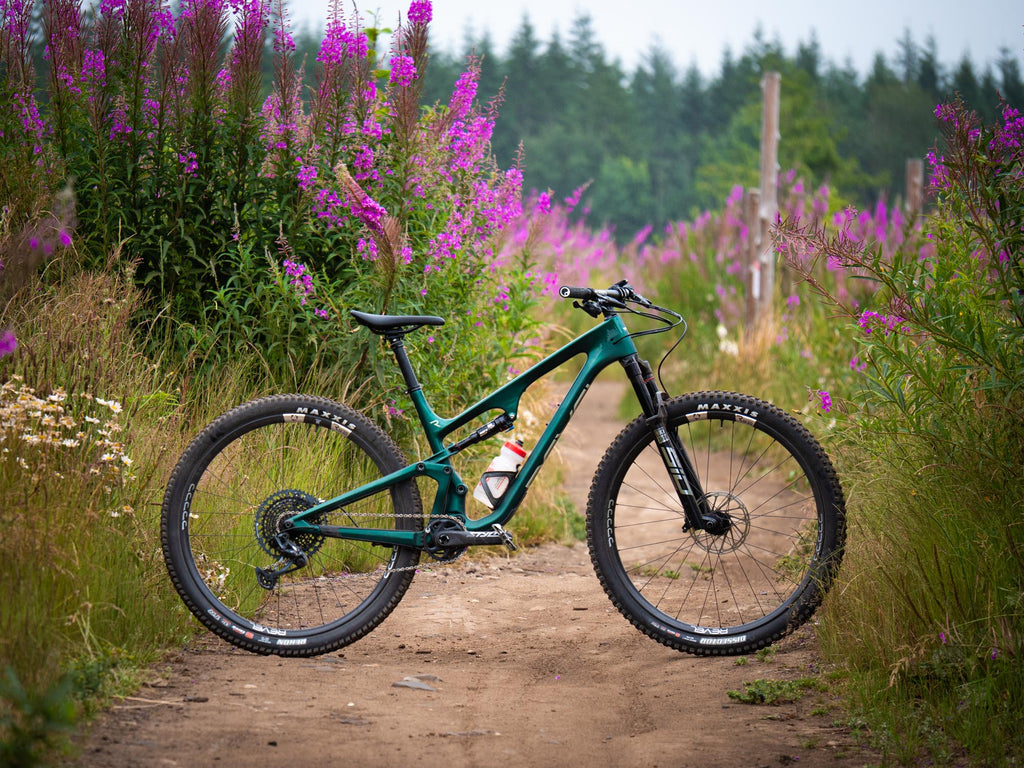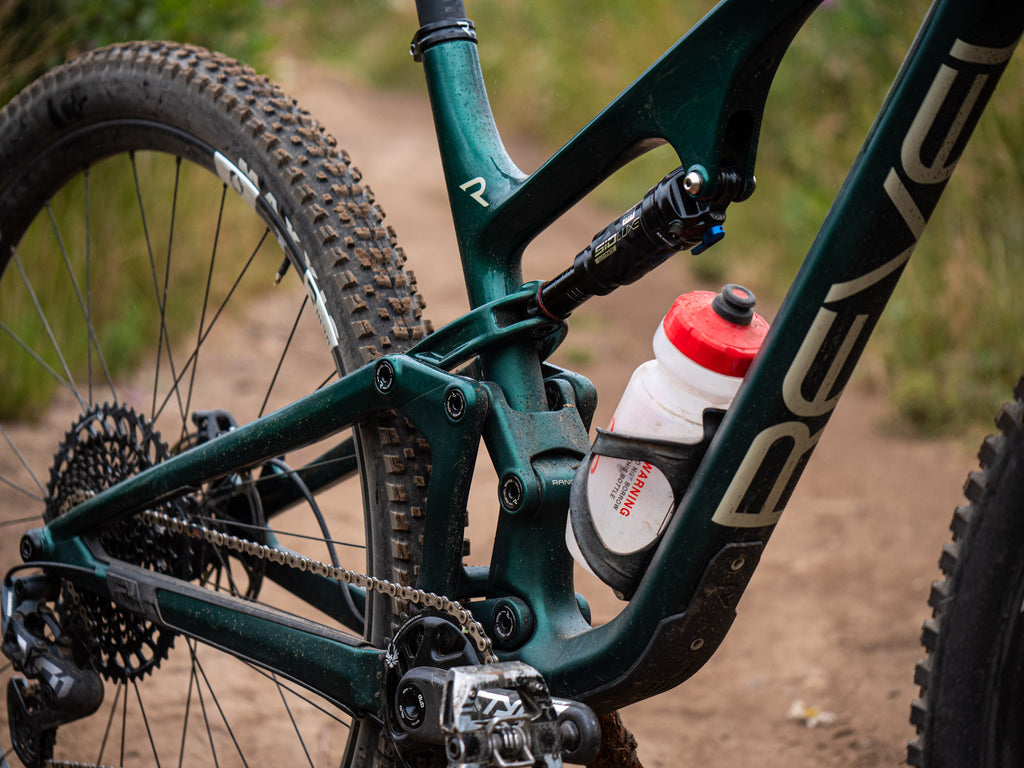There's a handful of new "down-country" bikes out there - the Specialized Epic Evo, the Yeti SB115 - but in this review we're going to look at two of our favorites, the Transition Spur and the Revel Ranger. These are bikes we think hit all the marks but that have slightly different heritage and sensibilities. We'll break down the differences and examine what might push you towards one or the other.
Mountain bikers are a fickle bunch, with our whims and wishes dictated not always by our sensibilities, but by a mix of marketing, trending fads, and FOMO. The rise of Enduro as a racing format ushered in a great deal of improvements to mountain bike technology and convention; things like modern geometry, highly refined suspension, and strong but lightweight wheels. But it also pushed an overly large segment of the market towards very long travel bikes - high speed weapons sporting over 6” of wheel travel and designed to be raced on downhill tracks by pro and semi-pro athletes. I was there, and I fell for it - I remember trading in my exceptionally fun Gary Fisher hardtail for a 160mm travel Yeti SB66, which I thought I needed for the front range trails of Fort Collins, Colorado (I didn’t).

That phenomenon has continued largely unabated, and I see a lot of people go “over-biked” in an effort to maximize their fun, unwittingly selling themselves short for 1.5” of travel. Yes, that’s the difference between 160mm and 120mm. 1.5” inches. And that’s a 1.5” that often means the difference between a 33 lb bike and a sub-27lb bike that still has 4.7” of wheel travel. Now, there was a time when accepting those 6 pounds and 1.5” was the only way to get the things that makes enduro bikes so capable and so cool - slack head angles, long wheelbases, and DH worthy suspension - but those days are no longer.
Bike and component manufacturers have started to see the light, and we’re witnessing a new crop of bikes that cut out the brutish heft of 130+ mm bikes. In its place they leave the same geometry, but on a lightweight frame that has a finesse and excitability that burly enduro bikes are inherently without. It’s a compelling new category that one might call “aggro-XC,” and it’s quickly filling up with extremely attractive bikes.
There’s a handful of them out there - the Specialized Epic EVO, the Yeti SB115 - but in this review we’re going to look at two of our favorites; bikes that we think hit all the marks but that have slightly different heritage and sensibilities. We’ll break down the (small) differences, and examine what might push you towards one or the other. At the end of the day, though, both of these bikes are all about maximizing fun and minimizing weight. You can’t go wrong with either.
The Transition Spur
The Spur is new to Transition’s line-up, but takes its cues from the Smuggler, their long time 120mm rear, 140mm front travel 29’er. To say it is a new Smuggler is to do it a disservice, but it is something of a distillation of that bike, both literally and figuratively. The Spur has similar geometry and travel to the 2020 Smuggler, but it builds up to around 25 pounds instead of the Smuggler’s 30+. It also has slightly less front wheel travel; 120mm instead of 140mm, about ¾” difference. Both the reach - how long the bike feels while you’re off the saddle and descending - and the stack height - how tall the front end feels, which also comes in to play while descending - are within half a centimeter of each other between both models. Things like wheelbase, bottom bracket height, and chainstay length are also close to identical, and the headtube angle is 66 degrees on both bikes. You lose ¾” of an inch of front wheel travel, but you gain so much more… after all, you don’t need suspension if you’re flying through the air over the whole rock garden.

The Spur’s visual aesthetic follows in line with Transition’s new Scout and Sentinel, taking a much more angular, sharp form than the swoopy, hot-rod curves of the Smuggler. It does have a more lithe, lightweight appearance than its longer travel kin. This is aided by the compact, tucked-away rocker link that actuates an inline rear shock with no piggy-back protuberance. Along with the expected front triangle water bottle mount, underneath the top tube you’ll find the accessory mount shared with the rest of Transition’s newest bikes. This fits adapters like Wolf Tooth’s B-RAD mount, to which you can affix anything from a spare tube to a carne asada burrito. In addition to those bolt bosses, there is a secondary water-bottle mount on the bottom of the downtube, often called the giardia bottle for its tendency to accumulate dirt on the mouthpiece. For the all-day epics you’ll find yourself doing aboard this steed, it is still a welcome sight.
As you let the arrow-like frame guide your eyes back from the front triangle to the rear, you’ll see the same flush-mounted chain and seatstay guides from the Sentinel and Scout. These do a lovely job of keeping the bike quiet and the paint-chip free. In front of that you’ll notice a threaded bottom bracket, which any mechanic will appreciate. But you won’t see a pivot on the chainstay, something quintessential to the four-bar, Giddy Up design that Transition has employed for the last four years. What is going on there? Have they switched to a single pivot design?

Not quite. If you’ve been following these “down-country” bikes, you will have read about the Specialized Epic Evo, another hot contender in this category. You’ll also have seen the similar lack of a chainstay pivot on that frame, despite FSR four-bar being Specialized’s signature for decades. What these bikes are doing is taking advantage of the minimal rotation that pivot has on a 120mm travel bike, and accounting for it by designing a bit of flexibility into the one-piece rear triangle. Not only does this eliminate quite a bit of weight, but this flexibility can be tuned to add to the snappy suspension action of these bikes. Less weight, less maintenance, and better feeling suspension… that’s a win, win, win.
There are a number of other items worth mentioning. The frame features an internally routed rear derailleur cable, but smartly leaves the rear brake line external for quick, bleed-free brake swaps. The pivots include shields over the bearings to keep that Utah dust and Squamish mud out. For those who think 66 degrees is too slack (or not slack enough), the Spur requires press in zero stack headset cups, thereby allowing you to purchase an angled headset if you want to tweak your geo. The Spur comes in gorgeous “Deep Sea Green”, a lovely, dark, greenish blue hue, as well as “Black Powder,” a slate grey with brushed gold accents.
The Revel Ranger
Revel entered the scene not too long ago with a fleshed out line of highly acclaimed mountain bikes: the 27.5”, 165mm travel Rail, and the 29”, 130mm travel Rascal. Both of these have been universally praised by bike media and my co-workers alike for their phenomenal build quality, light weight, and incredible suspension platform, CBF (Canfield Balance Formula). For their third bike, the founder Adam Miller wanted to get a little closer to his cross country roots. The company is located in the mountain sanctuary of Carbondale, Colorado, and Adam wanted a bike that could attack their endless Rocky Mountain trails with a vigor and ferocity that can be hard to sustain on a 29 pound, 5” bike. So he and his crack team sat down and came up with a list of features they wanted. The absurdly supple but efficient CBF suspension - check. Sub 26 pound build weight - check. Geometry stable enough to hurtle 30 mph down high-speed singletrack but sharp enough to get around Colorado’s crazy-tight mountain switchbacks - check.

Lo and behold, the Revel Ranger. 115mm of cloud-like rear wheel travel paired to a 120mm fork, a comfortable pedal position matched to an aggressive descending stance, and you have what one friend described to me as what “might be the best mountain bike I’ve ever ridden. Just hours of fun in the mountains.”
The Ranger, which comes in Johnny Green Jeans green or De La Coal black, maintains the reputation that Revel has garnered for well thought out features. A small chainguide comes stock (this bike is meant to be ridden hard), a threaded bottom bracket, and the capacity to run up to a 2.6” rear tire for those flat, dusty desert corners. Revel is so confident in their bikes that the frames have a lifetime warranty. With their commitment to sustainable environmental practices (see our Revel Rims review), you know they have built this bike to last as many miles as you can put on it.
Which bike is for me? Here are the similarities:
These are two very similar bikes, designed with the same intention: maximizing fun by enabling you to get out and ride as fast as you can for as long as you want. They go about that in nearly the same way, so let’s look at those aspects first.
The Ranger and the Spur have close to identical reach and stack height numbers; basically what you’d expect on a modern mountain bike. 453mm of reach for a medium Ranger, 455mm on the Spur. Both these bikes have long front centers, and are designed for stability at speed, putting you in an aggressive stance while you rocket through fast chicanes and pump over natural rollers as fast as you can manage.
The chainstay and bottom bracket drops are almost the same also - 436mm stays on the Ranger, 435mm on the Spur. The Ranger has a 38mm bottom bracket drop (how far the BB sits below the horizontal line between your wheel axles), the Spur’s is 40mm. These measurements help dictate how a bike will feel in corners, and in both bike’s case that feeling is going to be fast. Fast and snappy.

Both bikes come stock with RockShox’s new SIDluxe shock, and are designed around the SID Ultimate fork. I won’t belabor the details on this incredible suspension, and will instead point you towards our recent interview with RockShox evangelist Chris Mandell, who took us on a deep dive of that line of components.
They are both lightweight, they both have lifetime warranties, they both have accessory mounts, and they both look drop-dead gorgeous. Okay, okay, we get it. Probably going to be happy with either bike. This is true, but we don’t all go about having fun in the exact same way, which is what might set these bikes apart for you.
Let's look at the differences
The Spur was created by Transition, a company with roots very close to Whistler, BC, downhill capital of the world. The founders moved here for that proximity and the type of riding it affords. The Ranger was created by Revel, the third bike company founded by Adam Miller. Look at Why Cycles for a glimpse into his origins - they are the makers of gorgeous titanium frames. They do in fact make a titanium dirt jumper, so you know Why Cycles is all about fun, but it’s a slightly different background than say Transition’s Bottlerocket, a single crown freeride/slopestyle bike that was once offered covered in PBR logos.
The Spur and the Ranger are informed by their origins; let’s consider these differences to see if they’ll help you to gravitate towards one bike over the other.
The Spur has a 66 degree headtube angle; the Ranger’s is 67.5 degrees. This changes how the bike steers and alters the wheelbase, all of which relate to how a bike feels in tight corners and its stability at speed. The Ranger will feel a bit snappier and quick on its feet, whereas the Spur is going to feel a bit more “locked in” and stable, especially at high speeds. The difference isn’t large, but you can feel it if you ride the bikes back to back. Check out our blog post on the geometry dimension “trail” to learn more about how head angle affects a bike’s feel.
These two frames max out with different width tires; I think this is also informed by the locales from which they stem. Here in the muddy Pacific Northwest, tires above 2.5” wide aren’t all that common - there’s a point of diminishing returns to added width when getting your mud spikes to sink into the ground is the goal. In more arid areas like Colorado or California, that is not the case, and we see lots of bikes going out with 2.6” or larger tires. As such, the Spur can accommodate a 2.4” tire in the back, whereas the Ranger can fit up to a 2.6” 29” tire, or, if you’re so inclined, a 2.8” 27.5” tire. Yup, you can run plus tires.

Revel sees the Canfield Balance Formula design as the holy grail of suspension, and for good reason. It is extremely efficient while pedaling, seeming to not budge under pedal-force inputs, but maintains otherworldly traction both climbing and descending. The Revel Rascal, a 130mm 29’er, feels to me like a bike with 150mm+ of rear travel just because it works so well. But it uses a lot of bearings (18 to be exact), which means more maintenance, and more to worry about. The Spur uses a variant of a four-bar linkage, in this case with no actual chainstay pivot. The bike is also a mountain goat of a pedaler, as you would expect, and Transition has done amazing work tuning the suspension to be lively and playful while using all of its 4.7” to keep your wheel from losing grip. But it is a hair more nervous feeling, and if plowing through rough sections instead of jumping over them is your modus operandi, you’ll notice it. On the other hand, you have six bearings total to worry about.
Pedaling position. This difference is minor, especially since you can negate it by moving your saddle forward or backward in the seatpost clamp, but it bears mention. Transition is a large proponent of their SBG design ethos - Speed Balance Geometry. Part of that is a steep seat tube angle, which results in a shorter top tube for a given reach. As I mentioned, both bikes have near identical reach numbers, but because the Spur has a 76 degree effective seat tube angle versus the Ranger’s 75 degrees, it has a shorter effective top tube. This means that your bum will be closer to your hands while you spin up the hill, giving you a more erect posture. The Ranger is a bit more stretched out, and has a more classic, “touring” body position. Again, the difference is minor (about a centimeter), but might be of interest.

Lastly, the price. The Spur frame, along with a SIDluxe shock, will run you $2,999. The Ranger is $2,799. The quality of both is top notch, and I anticipate both frames will stand the test of time. Transition's bikes have earned a stalwart reputation, and although Revel hasn't been around all that long, based on what they've shown us so far I think they will be. But that is $200 you could put towards a lightweight custom wheelset, or possibly Cane Creek’s drop-dead gorgeous titanium eeWing cranks.
Still can't decide?
I can’t blame you. I can’t decide either, but I can’t have both. For me, the decision is going to come down to which I can get first (and I’m going to be waiting a little for either). At the end of the day, each of these bikes is made with the same goal: having as much fun on your bicycle as humanly possible. No matter which one you choose, you’ll find a huge smile on your face every time you ride.
Related Products
More Articles You Might Like
View More:



